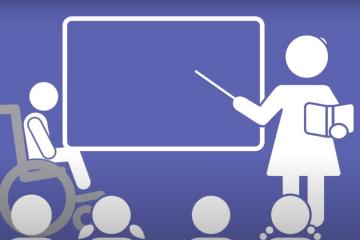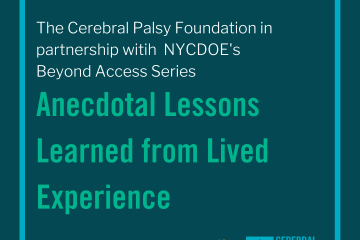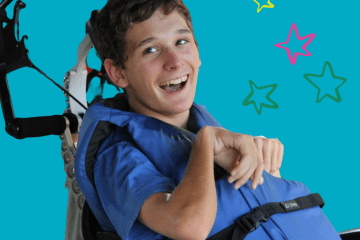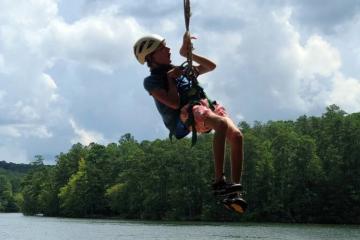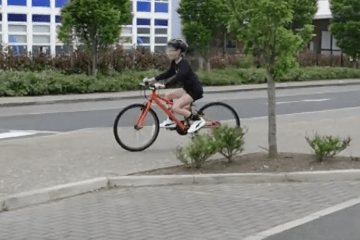Understanding children with cerebral palsy and bullying: A mixed methods approach
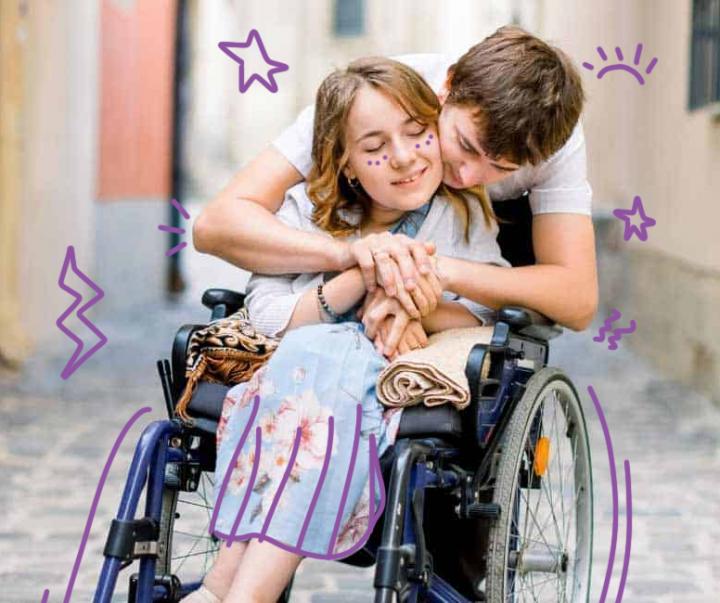
Hearing Their Voices! - Multiple Perspectives on the Topic of Bullying
Almost all of us can vividly conjure up an episode of being bullied that occurred in our own lives. Hopefully, fewer of us will have memories of being the bully. These experiences and remembrances often are formative, perceived as hurtful, and can have a long term impact on our health and well-being. For me the memory of being the center of attention in a negative way never quite fades, but with age, the perspective changes to a challenge.
Our team has been involved in the care of children with disabilities, primarily children with cerebral palsy, for over 30 years. This team consists of a physician, a nurse and a pediatric rehab medicine fellow. Both Bev, our nurse, and I, the physician, have had parents express concerns about bullying and the children confide their experiences to us. Often, the nurse is in an ideal position to do this, especially in the rehabilitation outpatient setting, where patients and families are seen on a regular basis over many years, and form long standing, open and trusting relationships. Part of every clinic visit for me, as their physician, is genuinely taking an interest in the ways the child participates in community activities and school. We stress building resilience through sports, music, dance and other UNIQUE ways for children to express themselves.
We were fortunate to be contacted by a medical student from Northwestern University wanting to set up a research project in his interest area, children with disability. We were delighted to set up a study that systematically surveyed children with cerebral palsy about bullying using a validated survey for able bodied children (soon to be published). This gave us the opportunity to hear their stories and qualitatively analyze their experiences. Our fellow, Dawn, helped author the paper, “Understanding Children with Cerebral Palsy and Bullying: A Mixed Methods-Approach” (published in Child: Care Health and Dev. 2020).
The study was meant to look at bullying, also known as victimization, of children from their perspective. Our focus was to look the type of bullying that occurred and self- reported characteristics surrounding this. We also looked at their physical abilities in regard to victimization by their GMFCS level. This is a system with 5 levels that describe a child with cerebral palsy’s gross motor abilities. Lastly, some children chose to give personal experiences. These personal experiences allowed us to look at common types and themes of bullying experiences across these children.
When children described their experiences, most were noted to take place in grades 7-8. Most commonly they self-described teasing, name calling, and cyberbullying. Psychologically, the children reported experiences consistent with social isolation and emotional difficulty. Most of the children reported seeking some type of external help from an adult. And three of the children described improvement of their situation over time.
We found that children with cerebral palsy are extraordinarily resilient with most reporting they were the same or more intelligent, popular and physically strong as their bully. When victimization occurred, most told an adult at home or at school. We found that girls
experience more relational victimization compared to boys who had more physical victimization. For motor ability (GMFCS) level, it was observed that very few non- ambulatory children (GMFCS IV and V) experienced victimization. Bullying was most common in ambulatory children with mild to moderate levels of impairment (GMFCS I – III).
This study came about because of our interest in learning from the children who come to our clinic about their experiences with bullying. Appreciation of their experience, including taking the time to ask and listen, is the first step to understanding. Their stories have helped us better understand the types of bullying, psychological effects, interventions, and outcomes that children with disabilities experience. These insights can help us develop coping strategies to promote resilience, support their abilities and minimize the effects of bullying.
All the children, and caregivers, know they are liked and respected for who they are in our clinic. We felt they were more than willing to share their experiences in a non- judgmental setting. Though it was a privilege and an honor to know that they felt so at ease to talk about some very unpleasant or hurtful times in their lives, we also understood that reliving these experiences could bring up negative feelings and we provided resources from the anti-defamation league as additional support. We would encourage everyone to ask their children about experiences with bullying and more importantly take the time to be quiet and listen.
Other important members of the research team included the original medical student investigator Dr. Brendon Frainey, student intern Dr. Kristina Stang, as well as Linda Ehrlich-Jones a qualitative researcher who provided mentorship.
"Part of every clinic visit for me, as their physician, is genuinely taking an interest in the ways the child participates in community activities and school. We stress building resilience through sports, music, dance and other UNIQUE ways for children to express themselves."

